
- Home
- Workshops / Tours
- Diary / Blog
- Galleries
- Foreign Trips
- Tasmania 2016
- NE Queensland 2016
- Western Alps 2016
- NE Spain 2016
- Australia's Wet Tropics 2015
- Australia's Top End 2015
- SW Australia 2015
- Switzerland 2015
- Andalucia 2015
- Belize 2015
- Australia 2014
- Switzerland 2014
- Belize 2014
- Bahama Islands 2014
- Switzerland 2013
- Ecuador 2012-2013
- Florida 2011-2012
- Vancouver Island 2011
- Australia 2010
- Peru 2008
- Bulgaria 2007
- Lesvos 2006
- California 2006
- New Zealand 2005
- Extremadura 2005
- Goa, India 2004
- The Gambia 2003
Southern California
29th April - 7th May 2006
Anza-Borrego Desert State Park
Named after the Spanish Explorer Juan Bautista de Anza and the Spanish word 'borrego' which refers to the Bighorn Sheep found within the park, Anza-Borrego Desert State Park covers over 600,000acres and is the largest desert state park in the United States.
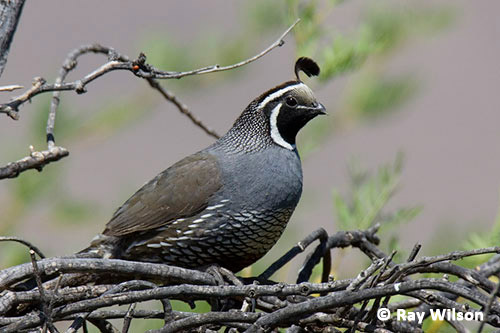
California Quail (Callipepla californica)
As with all deserts, the best places to view wildlife is at oases. At Yaqui Well the bushes were alive with numerous migrant Nashville and Wilson's Warblers.
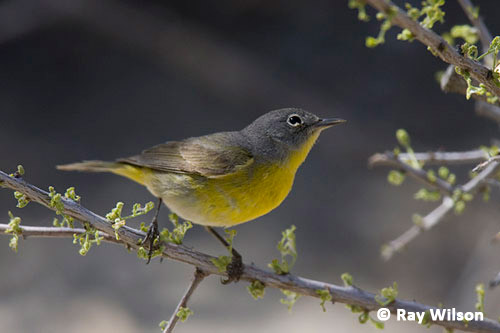
Nashville Warbler (Vermivora ruficapilla)
Tamarisk Grove campground is an excellent site for viewing owls. Long-eared Owls are usually very shy and easily disturbed, but here they nest in the trees at the entrance station just opposite where I pitched my tent. Barn Owls can also be seen flying in the area.
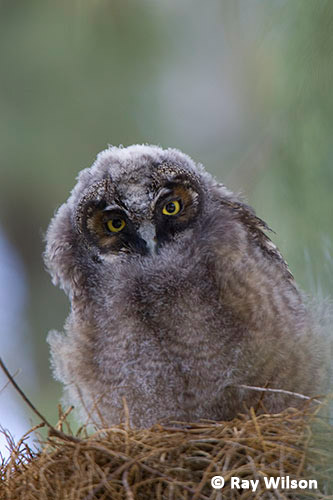
Long-eared Owl fledgling (Asio otus)
The peak of the wildflower blooming is from January to March, so it was getting a bit late when I was there but there were still numerous cacti in full bloom creating a splash of colour in an otherwise brown landscape.
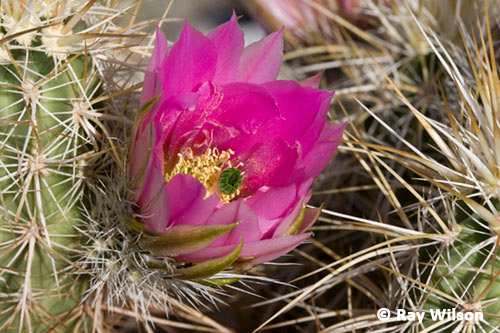
Engelmann's Hedgehog Cactus (Echinocereus engelmannii)
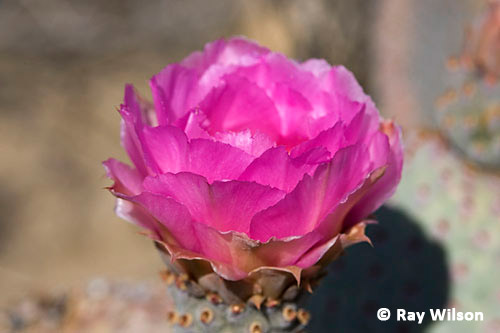
Beavertail Cactus (Opuntia basilaris)
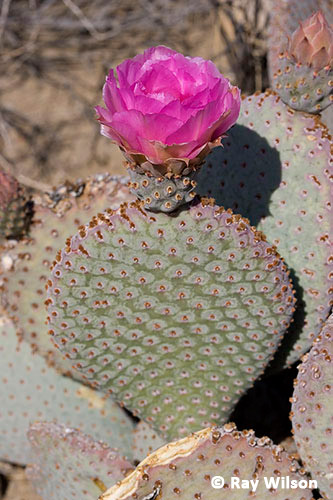
Beavertail Cactus (Opuntia basilaris) |
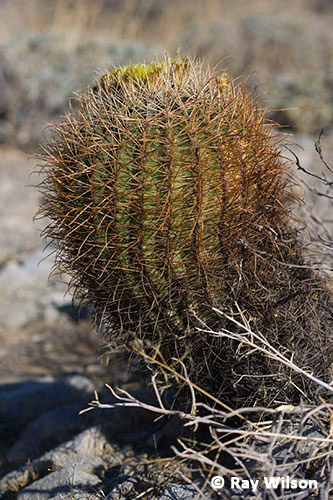 California Barrel Cactus (Ferocactus cylindraceous) |
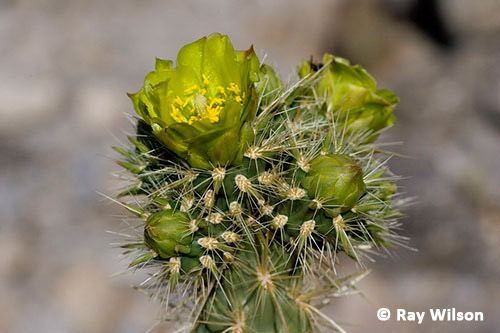
Silver Cholla (Opuntia echinocarpa)
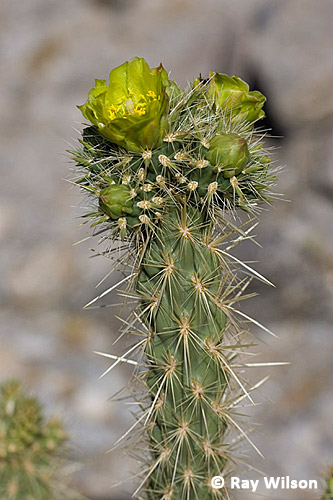 Silver Cholla (Opuntia echinocarpa) |
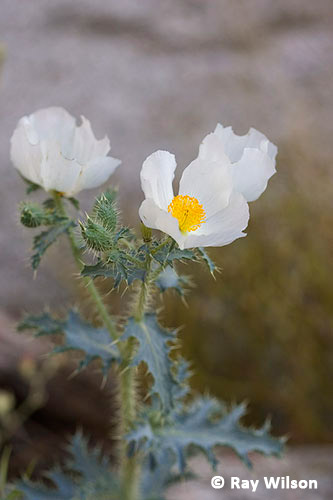 Prickly Poppy (Argemone corymbosa) |
One group of creatures I don't really associate with deserts are frogs, and I was a bit suprised to find this beautifully camouflaged California Treefrog close to the Palm Canyon oasis. The river was still flowing quite strongly so there were plenty of damp places for it to sit without fear of drying out.
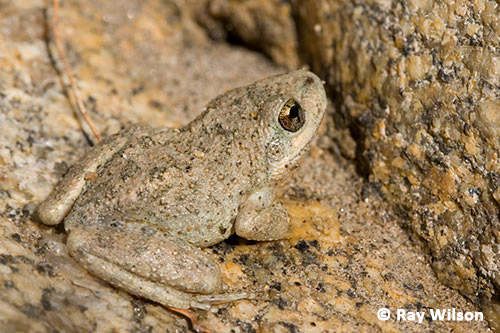
California Treefrog (Hyla cadaverina)
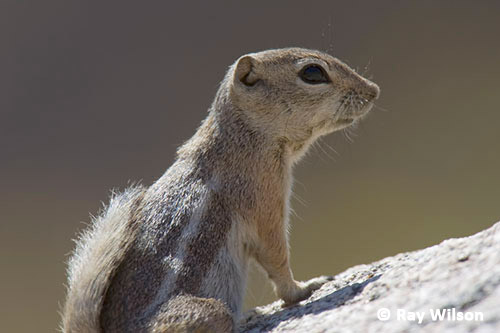
Whitetail Antelope Squirrel (Ammospermophilus leucurus)
| San Jacinto Mountain | California map | Salton Sea NWR |
Ray Wilson owns the copyright of all images on this site.
They may not be used or copied in any form without prior written permission.
raywilsonphotography@googlemail.com